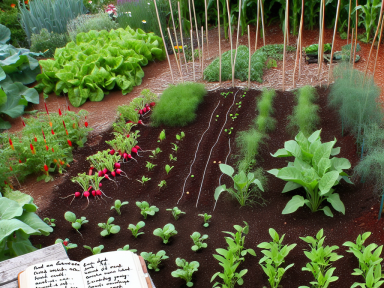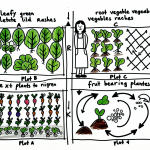Understanding Succession Planting
Succession planting is a powerful technique that allows you to make the most out of your garden space by staggering planting times. With proper planning, you can enjoy a continuous supply of fresh vegetables and flowers throughout the growing season. Here are some key strategies for effective succession planting:
1. Plan Your Planting Schedule
The first step in succession planting is to create a detailed planting schedule. Take into account the growth habits and maturity times of the plants you intend to grow. For instance:
- Early spring crops: Start with quick-maturing, cool-season vegetables like radishes, lettuce, and spinach. These can be planted as soon as the soil is workable.
- Follow-up crops: Once you’ve harvested your early crops, replace them with warm-season plants such as beans, tomatoes, or peppers.
- Late summer and fall crops: Utilize the space of your summer crops by planting fall vegetables like broccoli, cabbage, and kale.
2. Use Transplants Strategically
Starting seeds indoors or purchasing young plants can give you a head start. This strategy is particularly effective for crops with a longer growing season, such as tomatoes and peppers. By transplanting seedlings, you can reduce the time plants spend in the ground, making room for successive plantings.
3. Implement Relay Planting
Relay planting involves overlapping plantings so that there’s always something growing in each part of your garden. For instance:
- Intersowing: Plant fast-growing crops like radishes or arugula in between slower-growing crops like carrots or beets. The fast growers can be harvested before the slower plants need more space.
- Intercropping: Grow a tall crop (e.g., corn) alongside a low-growing crop (e.g., lettuce). The low-growers benefit from the shade provided by their taller neighbors.
4. Choose Crop Varieties Wisely
Different varieties of the same vegetable can have drastically different growth rates and maturation periods. Consider:
- Early vs. Late Varieties: Plant early-maturing varieties to get an initial harvest, followed by main-season and late-maturing varieties to extend the harvest window.
- Climate-Adapted Varieties: Choose varieties that are well-suited to your local climate and seasonal conditions for more predictable results.
5. Optimize Soil Health
Healthy soil is the cornerstone of successful succession planting. Here are some soil management tips:
- Regular Amendments: Add organic matter such as compost or aged manure to maintain soil fertility and structure.
- Cover Crops: Plant cover crops during off-seasons to improve soil health, reduce erosion, and suppress weeds.
- Mulching: Use mulch to conserve moisture and keep soil temperatures stable between plantings.
6. Monitor and Adjust
Regularly observe your garden and make adjustments as needed. Keep an eye on pest and disease pressures, soil moisture levels, and plant health. If something isn’t working, don’t be afraid to change your plan.
7. Record and Reflect
Keeping a garden journal can be immensely helpful for succession planting. Note the planting dates, variety names, and harvest times. Reflect on what worked well and what didn’t. This information will be invaluable for planning future seasons.
By mastering succession planting, you’ll be able to maximize your garden’s productivity and enjoy a diverse array of crops throughout the year. Happy planting!



GIPHY App Key not set. Please check settings